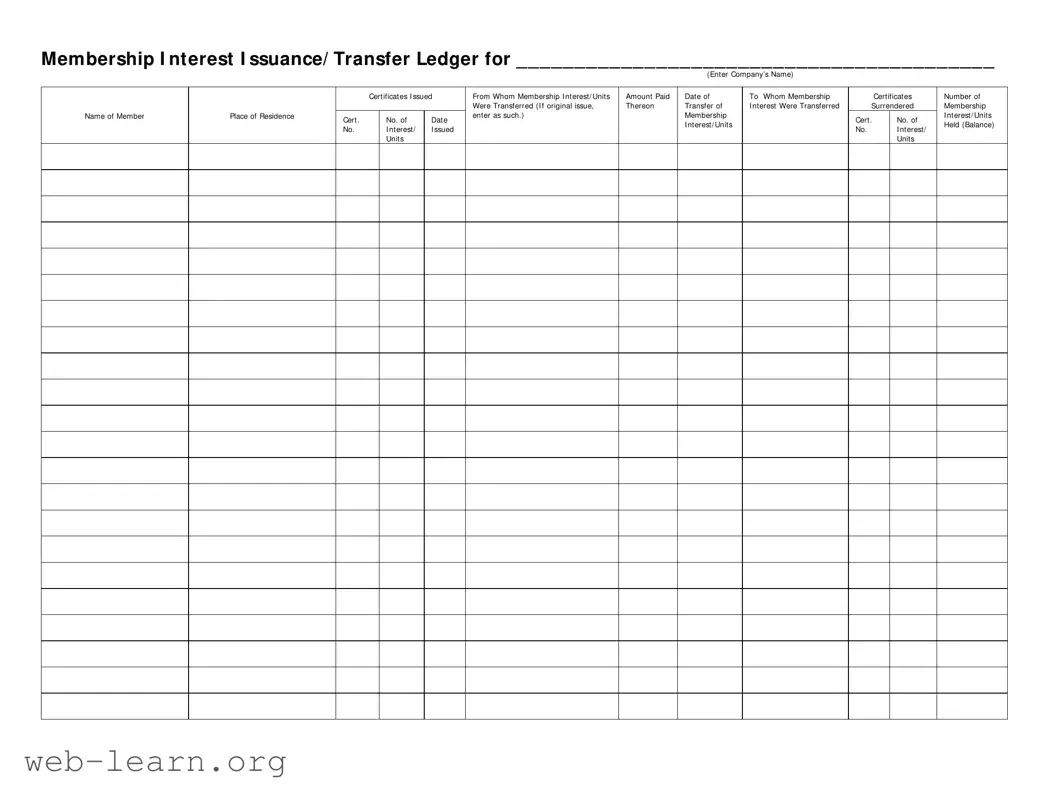The Membership Ledger form serves as a crucial document for companies managing membership interests, overseeing the issuance and transfer of such interests in a structured manner. This form records essential information about the certificates issued, including details of both the individual or entity from whom the membership interests were transferred and the recipient. It delineates the amounts paid for membership interests and provides a chronological account of the dates when these transfers occurred. Importantly, it captures the original issue status, clarifying whether a membership interest was transferred from an initial issuance or subsequent transactions. The ledger also keeps track of various certificate numbers associated with the membership interests, ensuring that the history of ownership is transparent and traceable. Furthermore, it summarizes the balance of membership interests held, offering a clear view of how many units remain with each member after transfers. By organizing this data, the form enhances accountability and aids in the management of membership records, which is critical for compliance and operational efficiency.

